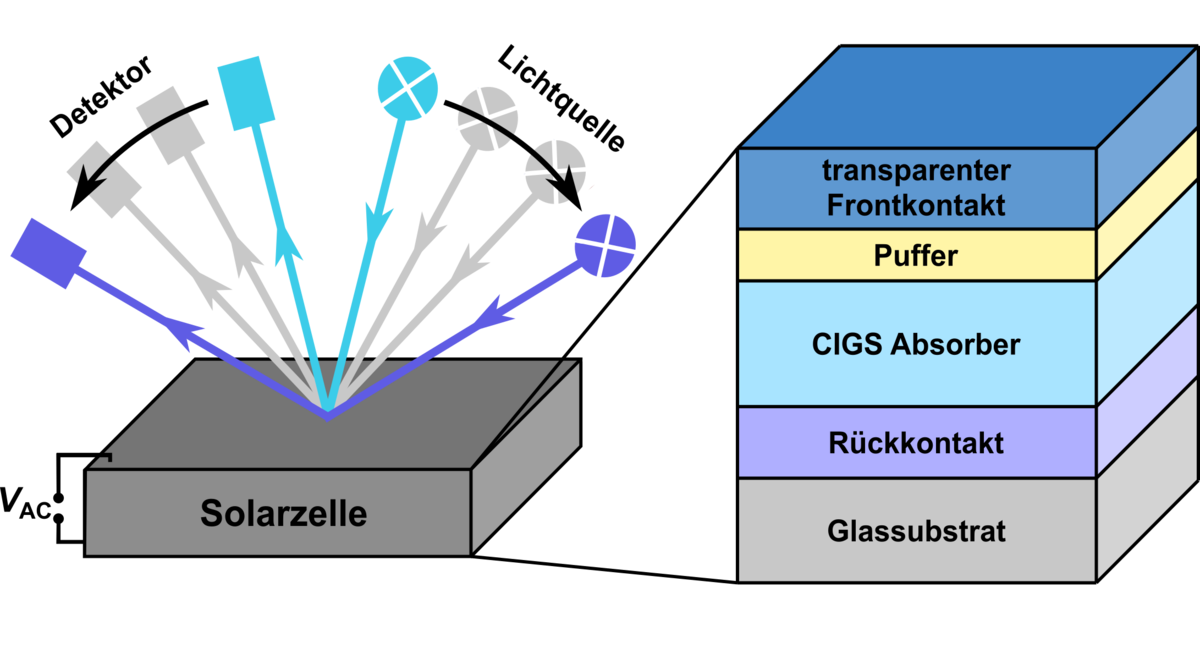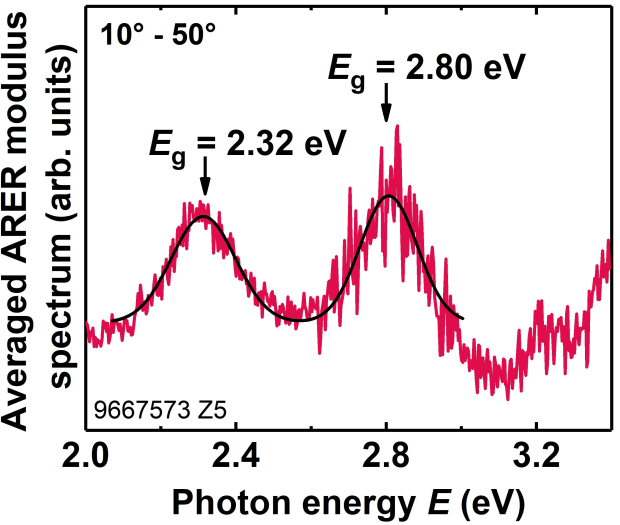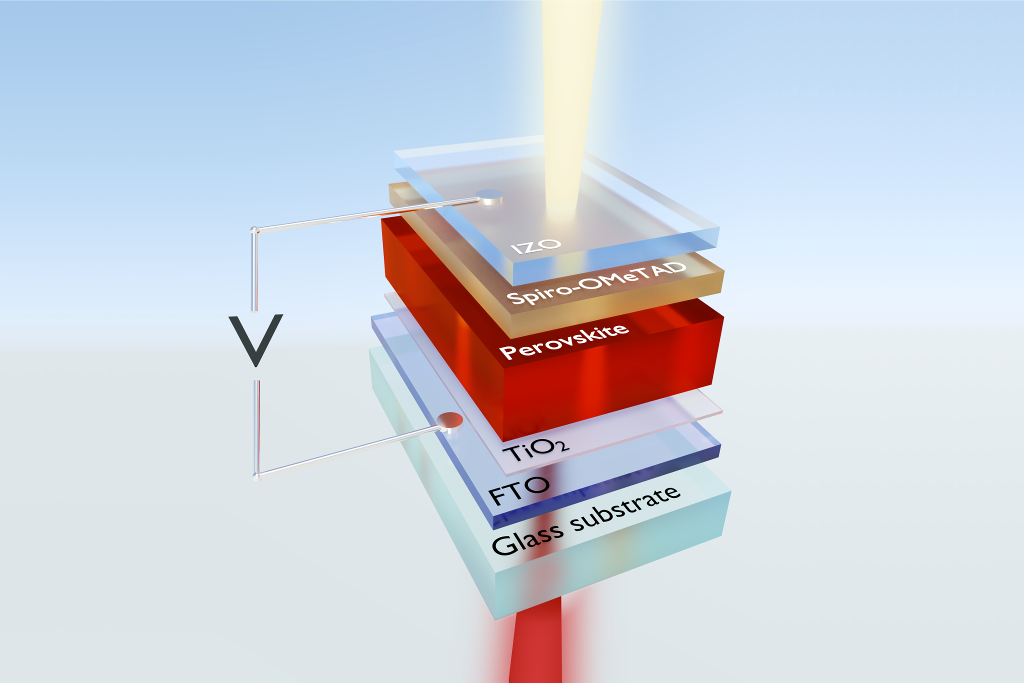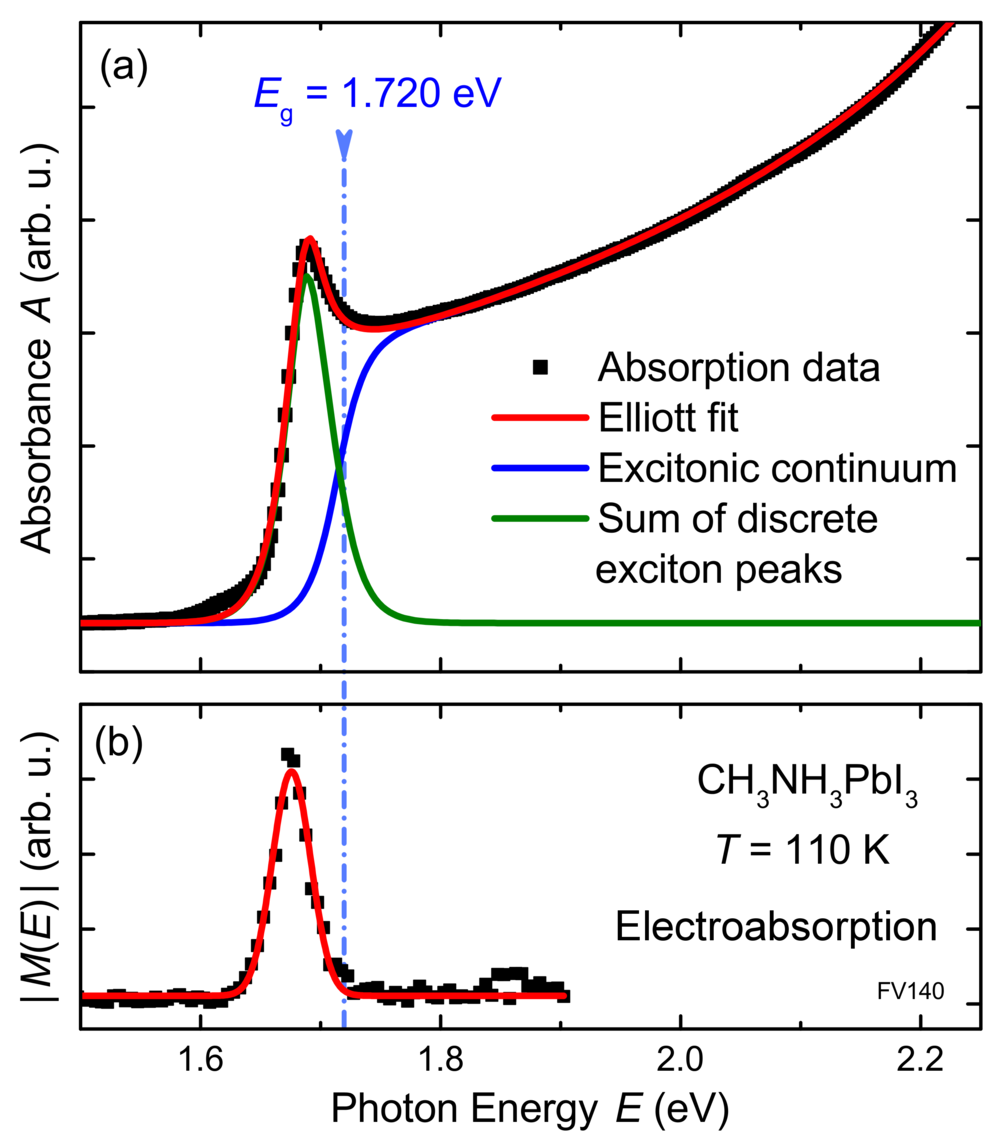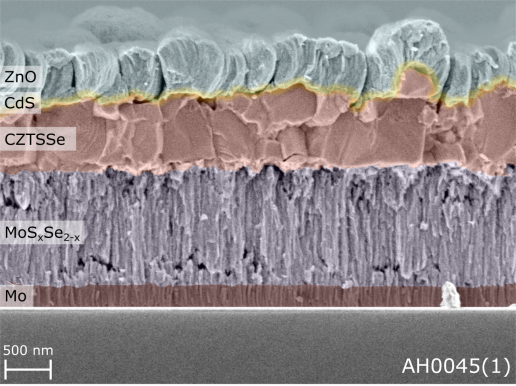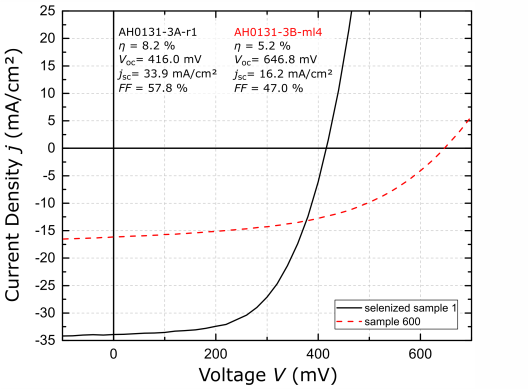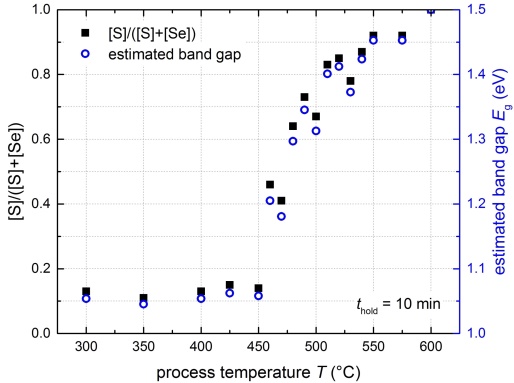CIGS solar cells
Cu(In,Ga)(S,Se)2 (CIGS) solar cells belong to the established thin-film solar cells reaching record efficiencies of up to 23.4%. One of the big advantages of the absorber material is the tunability of its bandgap energy through the variation of the Ga/(Ga+In) ratio which allows for better use of the solar spectrum. Due to the absorber’s high absorption coefficient a 2 µm thick layer is sufficient for the electricity generation which leads to numerous new applications for the solar cell. For instance, CIGS thin-film solar cells can be used for façade-integrated photovoltaic systems and for light and flexible solar modules for outdoor activities.
Our research group closely collaborates with project partners from the industry and other research institutes to further optimize the solar cell and therefore increase the power conversion efficiency. For this, our focus lies, on the one hand, on the investigation of the influence of different absorber compositions, and on the other hand, on the study of alternative materials for the cadmium sulfide buffer layer for the reduction of the absorption losses in this layer. An additional reason for the replacement of the buffer layer material is to get rid of the toxic cadmium.
Further CIGS solar cells with different absorber compositions and buffer materials are investigated by means of Kelvin probe force microscopy (KPFM) and Electroreflectance spectroscopy (ER). KPFM enables the measurement of the potential distribution through all the layers of the solar cell and provides information about the influence of the gallium content on the Fermi level of the absorber and the localization and width of the space–charge region. Electroreflectance spectroscopy is a modulation spectroscopy method and applied for the destruction-free determination of the bandgap energies of the absorber and buffer layers and for the consequent analysis of a possible intermixing at the absorber–buffer interface.
publications:
Perovskite solar cells
Thin-film solar cells based on organic-inorganic perovskite absorber layers have been shown to be the fastest growing solar technology in history so far. Starting with a power conversion efficiency of 3% in 2009, perovskite solar cells have achieved an efficiency above 20% nowadays.
The main interest of our research is to investigate the fundamental optoelectronic properties of the perovskite absorber material and solar cells by means of advanced optical spectroscopy. The aim is to gain valuable insight into the material and device physics and their correlation with the overall material properties and device performance. For this, we utilize different spectroscopic techniques, e.g., absorption spectroscopy, steady-state and time-resolved photoluminescence (PL) measurements, and modulation spectroscopy.
For example, modulation spectroscopy (in particular electroreflectance (ER) and electroabsorption (EA)) allows for a precise determination of the bandgap and deeper understanding of the electronic structure. Using this technique, we are able to investigate complete solar cells in a non-destructive way. The basic principle is to measure the influence of a modulated external stimulus, e.g., an applied bias, on the optical properties of the sample, e.g., transmission or reflectance.
By employing these advanced spectroscopic techniques, we are able to investigate fundamental material properties, e.g., the role of excitonic effects on optical transitions or temperature-dependent phase transitions of the crystal structure. Furthermore, we look at different absorber compositions and the implications for the performance and stability of perovskite-based solar cells.
publications:
Kesterite solar cells
Solar cells based on kesterite (Cu2ZnSn(S,Se)4, CZTSSe) absorbers are promising candidates for thin-film photovoltaics, for they are using environmentally friendly and cheap materials.
Our current research is focusing on both the fabrication, as well as the characterization of regarding solar cells. Hereby the fabrication is realized on two different approaches. On the one hand co-evaporation is used, a technique which allows for precisely controllable conditions and therefor a high purity of the material, since the deposition takes place in vacuum. On the other hand solution-based doctor-blading is used, a very simple process which makes a high throughput of samples possible.
As part of the current research on kesterites, among other things, we investigate modifications of the absorber material by e.g. the incorporation of germanium, which can substitute tin within the absorber material and also work as a catalyst during the whole fabrication process. Furthermore a fabrication technique was developed, which allows for a precise tuning of the sulfur-selenium-ratio in CZTSSe and therefor also of the absorber materials’ band gap. This technique opens up for a lot of possible applications of kesterite absorbers, like for example tandem solar cells. In addition we are working on alternative buffer materials, which are also used in Cu(In,Ga)(S,Se)_2 (CIGS) research. Up to now CdS is mostly used as buffer material for both kesterite and CIGS solar cells. This is planned to be replaced by a more environmentally friendly material with smaller absorption losses. For a non-destructive investigation of buffer and absorber layers a novel type of modulation spectroscopy is used, which is based on electro reflectance and was developed within our research group. Further methods used for the characterization of kesterite solar cells are photoluminescence, Raman spectroscopy, X-ray diffraction, electron microscopy and studies on absorption and j/V-characteristics.
In the focus of the spectroscopic characterizations are compositional dependencies of material-specific properties like e.g. the degree of order-disorder within the the Cu-Zn-plane of the kesterite crystal, which shows a direct impact on the band gap of the material. The insights gained within this research essentially contribute to the overall understanding of the material CZTSSe.
Our research is carried out in close cooperation with the Light Technology Institute (LTI) of KIT, Baden-Württemberg's Centre for Solar Energy and Hydrogen (ZSW) in Stuttgart, the Laboratory for Chalcogenide Photovoltaics (LCP) of the University of Oldenburg and the Institute for Chemical Technology and Polymer Chemistry (ITCP) of KIT and is funded by the Federal Ministry of Education and Research (BMBF) as part of the project “FREE-INCA”.
publications:

